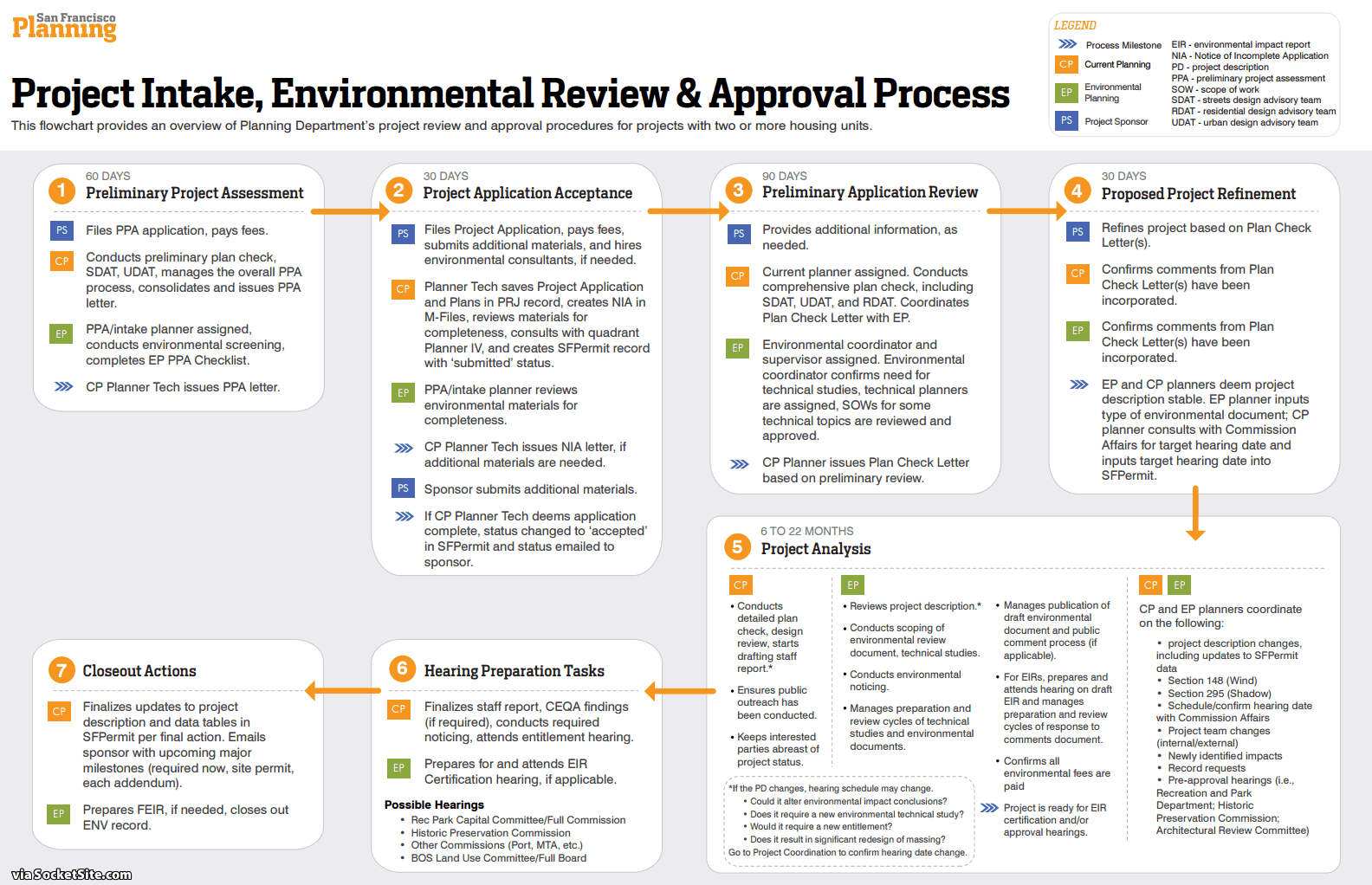In general, it now takes between a year and three for a newly proposed multi-unit development in San Francisco to be preliminarily assessed, processed, analyzed, reviewed and readied for a potential approval hearing in front of San Francisco’s Planning Commission, a workflow which San Francisco’s Planning Department has been actively working to streamline since the end of 2017.
In fact, Planning’s target time frame for completing the very first step in the approval process, the completion of a Preliminary Project Assessment (PAA), has already been reduced by a third (from a previous target of 90 days to a current average of 62) and new suite of tools to allow for the online submittal and tracking of applications has been launched.
A pilot program which allows developers to conduct an advanced assessment of a property’s historic resource classification and potential preservation considerations was launched at the beginning of this year, with 27 of 42 advanced applications having been processed in an average of 61 days, 93 percent of which have returned a Category C determination of “No Historic Resource” being present on the proposed development site (“providing early certainty to prospective applicants where the historic resource status is unknown”).
And yes, plans to further “codify or standardize” the guidelines for design review and to standardize the “conditions of approval” for an environmental review are in the works as well.
All that being said, keep in mind that there are currently twice as many units of housing which have already been approved but have yet to break ground than newly proposed units which are currently working their way through Planning in San Francisco’ overall pipeline of development.

This should have happened 20 years ago, but better late than never. We do love us some process.
It’s still ridiculous that the fastest time line on that chart is 13 months. How about a flow chart that goes: project meets planning code -> pass on to DBI; does not meet code -> advised sponsor to correct. Take some of the staff time freed up and put it into rationalizing the code.
True, true. This is a first step. These small steps are better than nothing.
To get to your flow chart, though, we need a mayor who will push it through. It has to be a priority from the top. Any mayor in the last 30 years could have done this, but no one has.
Time for as of right development
Exactly.
This chart represents — in practice — zero improvement.
Ask any developer seeking Planning permission on any of their multi-family housing projects — it’s still taking forever.
We need a new Planning Director — one that’ll actually implement the Mayor’s directive.
The lack of input by the CAO shows that chart is bullsh*t.
The problem is CEQA has been perverted. This wasn’t what was intended. If you look at CEQA, housing on parcels zoned for housing should be CatEx.
Karl,
We need a mayor who pushes this to happen. For decades, mayors have talked about streamlining but never forced it through. This is tiny progress.
Mayor Breed, if she’s truly serious about getting housing built, needs to replace Planning Director Rahaim with someone who is not only 100% in alignment with her stated vision, but with substantially more fire-in-the-belly.
Sorry, but the current Planning Director at best appears to be biding his time until retirement — and, at worst, is working against what the Mayor’s executive direction.
I can understand that London Breed may currently have seemingly bigger fish to fry (i.e., with the homeless crisis and navigation centers etc.), prior to her upcoming (re)election — but once she’s passed November 5th, she needs to cut John Rahaim loose and replace him with someone capable and energetic.
Here’s the man himself talking about (and even with a self-aware chuckle) how long it takes for things to get done and that a huge benefit to taking so long is “community buy-in”. Absurd.
I agree completely. The Mayor could definitely make some orders here and get this moving quickly. Of course, any Mayor over the last several decades could have done that, but none of them did.
Because of course, that would mean that the community couldn’t get their oar in on any potential development, and the political machine will spit out anyone who cuts off certain constituencies.
No one gets re-elected by appearing friendly to evil real estate developers.
Much easier to buy and fix-up than to try to build more.
This is a pathetic and weak attempt at reform at best. The SF Planning Dept. is completely and systemically broken: it’s time for a new Planning Director!!!
Word!
They forgot to connect item 7 with item 1. it’s the circle of life